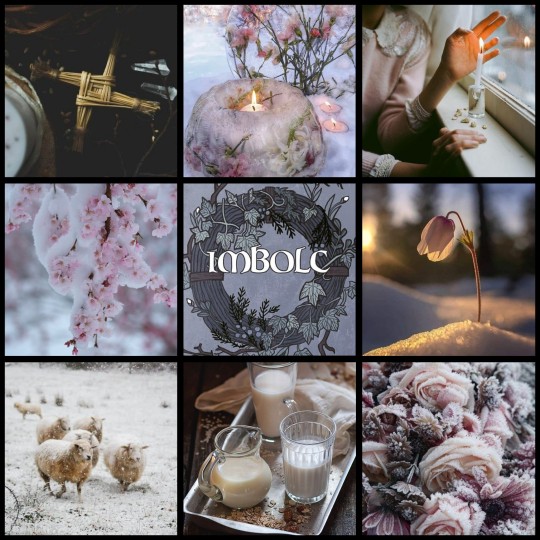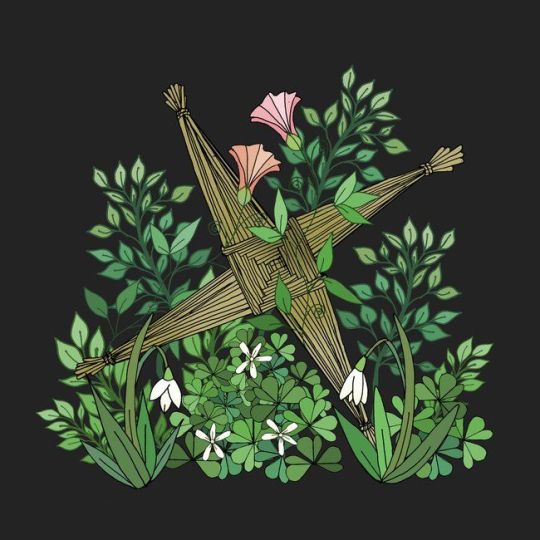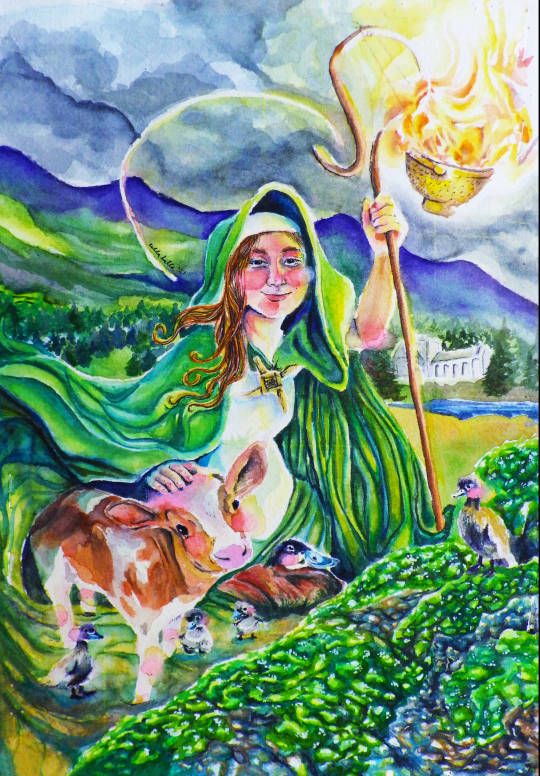#Brigid’s cross
Explore tagged Tumblr posts
Text







Dug out the Autumn embroideries. I usually start transitioning around Lammas so I’m really late this year. At least I’m on time for Michaelmas.
#Autumn#michaelmas#Lammas#devotional embroidery#folk embroidery#cross stitch#dozinky#dozinky wreathe#Brigid’s cross#corn dolly#mell doll#goddess#embroidery#goddess embroidery
31 notes
·
View notes
Text
Happy imbolc everyone! May Brigid bless you. I have a quick question for y’all. What do you all do with your old brigids crosses from years past? I’ve been burning them each year, but I’m not sure where I got that from. It’s not in any of my source books, and I can’t find anything on it online. I know they were often kept to help sick animals or other similar things, but I keep coming back to the tradition of burning a brat bride after a certain amount of time and trying to align it with how I interact with the brigids cross. I was also raised catholic, so there’s a chance that my brain is trying to conflate the palms from Palm Sunday that are burned for Ash Wednesday with my brigids cross.
Either way, I think I’m going to burn it for ash divination because I don’t have the big hearth fire to do that for, but I wanted to see what everyone else did and if there’s any precedent for burning them or if that’s just my own upg.
Anyway, enjoy the holiday everyone!
#throws this into the abyss#imbolc#imbolc 2025#Brigid#st brigid#brigid’s cross#irish paganism#celtic paganism#paganism
2 notes
·
View notes
Text
Story Time!!
I work for a very large haunted house. A while ago our wardrobe trailer burnt down from an arsonist(?)
I was thinking about it now and we fire proof the entire thing now with fire proof paint, and we’re extremely careful nowadays. Butttt we put Brigid’s crosses in our homes to stop them from burning down so why not put on in my trailer.
As the lead I get to decorate lol so I’m super excited! I have to use all my wall space so it’s gonna be painted on I think. The lead makeup artist is also a witch so I’m not worried about anyone getting upset with it, considering when the trailer burnt down the only thing left untouched and unburnt was a doll and they asked him to cleanse and bless it 🤣
#haunted house#scare actor#costume designer#lead costume#professional costumer#wardrobe#wardrobe crew#wardrobe lead#wardrobe manager#devotional blog#brigid devotee#brigid#goddess brigid#digital altar#irish mythology#irish pagan#brigid goddess#gaelpol#brighid#Brigid’s cross#protection spells#witchcraft
5 notes
·
View notes
Text


Happy St Brigid’s Day tomorrow! And happy Imbolc, too, each to those who celebrate. It seemed like January would never end but the light is actually returning.
#pennsylvania#flowers#snowdrops#winter#st brigid#st brigid’s day#happy imbolc#imbolc#first of february#cross quarter days#light is returning!
596 notes
·
View notes
Text

#artists on tumblr#my art#ireland#irish mythology#imbolc#st brigid's cross#st brigid's day#wheel of the year#gaelpol#pagan#irish polytheism#watercolour illustration#ostara
289 notes
·
View notes
Text

Imbolc, St. Brigid's Cross (Candlemas), Feb 1-2
153 notes
·
View notes
Text

In honor of Imbolc, here is an art study I carried out by illustrating different variations of Brighid's Cross.
887 notes
·
View notes
Text

Happy Midwinter and Blessed Imbolc ❄️🌸
Spring is just around the corner
#imbolc#st brigid's day#st brigid#cross quarter day#pagan#wicca#spring#celtic#winter#midwinter#wheel of the year#moodboard
164 notes
·
View notes
Photo

237 notes
·
View notes
Text

St. Brigid's Cemetery Easthampton, MA
prints available
#art#cemetery#photography#mass monumetnalist#cemetery photography#massachusetts#cross#St. Brigid's Cemetery#Easthampton MA
22 notes
·
View notes
Text

Happy feast day, St. Brigid!
#feast day#st. brigid of kildare#catholic#irish#saint#art print#art#catholic art#ducks#baby cow#calf#ireland#green#baby duckies#st. brigid's cross#art sale
61 notes
·
View notes
Text

The Goddess Brigid
Art piece I did for a dear friend.
Bluesky Linktree
#celtic mythology#brigid#brigid devotee#paganism#devotional art#colored pencil#deity work#brigid cross#imbolc#wheel of the year#celtic#deity worship#artists on tumblr#bluesky#art support#art witch#my art#deity art
15 notes
·
View notes
Photo

16 notes
·
View notes
Text

Cross of St Brigid. Imbolc, Candlemas
10 notes
·
View notes
